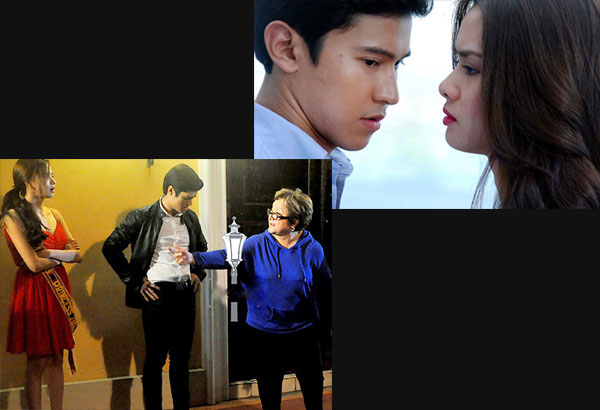When we heard that Laurice Guillen was back into directing movies after quite some time, we told ourselves we just had to watch it. Billed Once a Princess, the film is based on a Precious Hearts Romances bestseller written by Angel Bautista, and has Enchong Dee, Erich Gonzales and JC de Vera in lead roles.
What brought us to stand in line to watch the movie was several reasons. First and foremost, it was to find out what it was that had convinced a director such as Laurice to accept the project. And last was to pray to all the gods we knew to guide Laurice in what to many would appear a foolhardy decision.
After watching the film and listening to the audience’s reactions, we came out even more confused. There was no screaming of “I love you, Enchong and Erich” and clapping from the gallery which meant the box-office would be good. There were no walk-outs either in the middle of the film which would have been disastrous. We were left with more questions than answers.
Reviewer Francis Joseph Cruz writes, “Once a Princess is a strange creature that appears to be what it is being sold as, a swoony romance between mismatched lovers separated by cruel circumstance. As the film progresses, however, it shows some signs of wanting to break off the mold, of being more than the glossy adaptation it was originally conceived to be.”
Erich is the prettiest, richest and most popular girl on campus. Enchong is just one of the school’s many wallflowers. As in most standard love stories, they meet and fall in love, but soon after Erich’s family goes bankrupt forcing Erich to marry JC de Vera from a wealthy family. Enchong is left to nurse a broken heart. Several years later, their roles are reversed. Erich is struggling financially, in need of a job to support herself and JC had a motorcycle accident. Erich becomes the secretary of Enchong, now a top executive in a technology company. But it is now a cruel Enchong she encounters.
Francis continues, “Erich effectively portrays her role with such affecting fragility, efficiently bringing across the message that the film is not just about her character’s amorous whims but also about her anguish. This is the dark side that tempers the gloss. Moreover, by enunciating female suffering within the framework of escapist cinema, Guillen brings to the fore the lopsided gender politics existing in most Filipino romances. Men have always been depicted as demi gods women should fawn over, and be served. Love is just a tool used to numb the pain.”
In other words, the reviewer is telling us that this is not a brilliant film. Nor is it a bad one. In the hands of a Laurice Guillen, it will still have to suffer the limitations of its source, but to us, the final product is already acceptable. It is one step forward in ignoring the happy ending. As we leave the cinema, a gang of young girls loudly complained to one another. “Kainis naman. Bitin ang ending.” But not all were of the same opinion. Another girl stated, “Okay na yan. Nakakapagod na ang panay na ‘happy ending,’ at least here we have a choice.”
And that, we think was the reason why director Laurice accepted the film. It is one step forward. It makes young viewers think and discuss. It will be a long journey towards change but one all has to take, especially the youngsters of this generation.
(Send your comments to bibsyfotos@yahoo.com or text me at 0917-8991835.)


